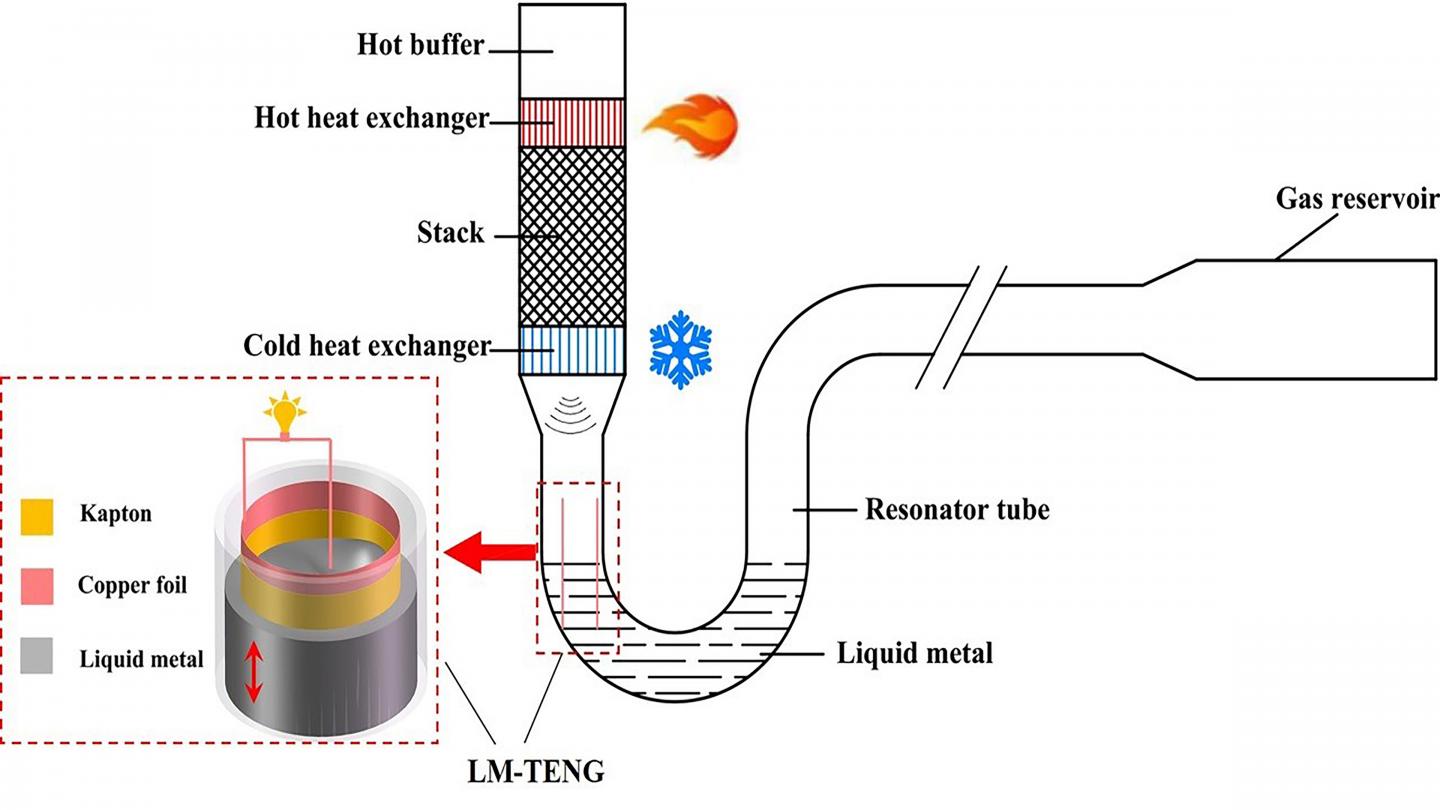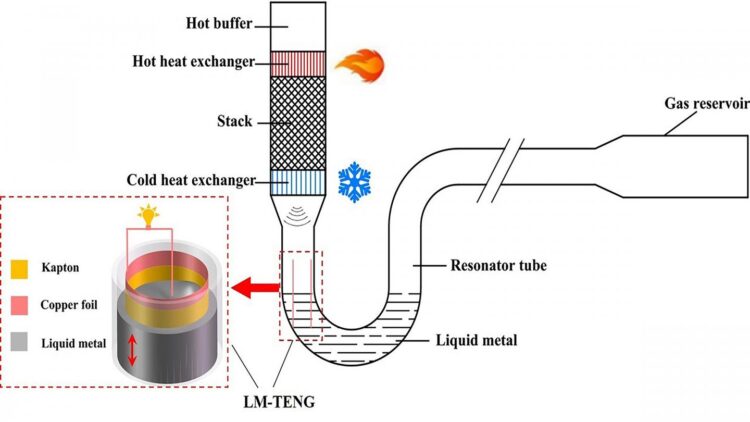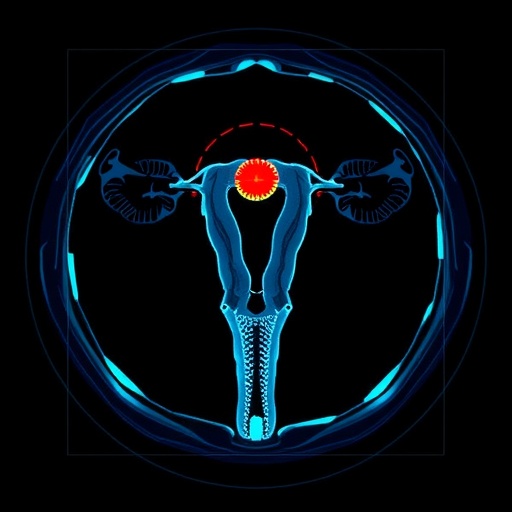Proposed thermal energy harvester may find applications in waste heat recovery, power supplies within microelectromechanical systems, solar power, space power systems

Credit: Shunmin Zhu, Guoyao Yu, Wei Tang, Jianying Hu, and Ercang Luo
WASHINGTON, March 31, 2021 — As environmental and energy crises become increasingly more common occurrences around the world, a thermal energy harvester capable of converting abundant thermal energy — such as solar radiation, waste heat, combustion of biomass, or geothermal energy — into mechanical energy appears to be a promising energy strategy to mitigate many crises.
The majority of thermal power generation technologies involve solid moving parts, which can reduce their reliability and lead to frequent maintenance. This inspired researchers in China to develop a thermal power nanogenerator without solid moving parts.
In Applied Physics Letters, from AIP Publishing, the researchers propose a thermal power nanogenerator, called a thermoacoustically driven liquid-metal-based triboelectric nanogenerator, or TA-LM-TENG, which converts thermal energy into electrical energy.
“This generator includes two parts: a thermoacoustic engine and a liquid-metal-based triboelectric nanogenerator (LM-TENG),” said Guoyao Yu, a professor at the Technical Institute of Physics and Chemistry, Chinese Academy of Sciences.
First, the thermoacoustic engine converts thermal energy into acoustic energy via oscillatory thermal expansion and contraction of a gas. Next, the LM-TENG converts acoustic energy into electrical energy via the coupling effect of contact electrification and electrostatic induction.
When heating the heat exchanger of the thermoacoustic engine, “the gas in the engine starts a spontaneous oscillation,” Yu said. “The oscillatory motion of the gas pushes a liquid metal column flowing back and forth within a U-shaped tube. This makes the liquid metal periodically immerse and separate with a polyimide film, generating an alternate voltage at the electrodes. This extracts electrical power from the TA-LM-TENG.”
A TA-LM-TENG’s most desirable feature is the lack of any solid moving parts that can break, which will ensure the nanogenerator is more reliable and help it achieve a long lifespan.
“This generator also promises a theoretically high heat-to-electric conversion efficiency,” said Yu. “And we designed and constructed a conceptual prototype to validate the feasibility of our concept. In preliminary experiments, the highest open-circuit voltage amplitude of 15 volts was achieved, which implies that our concept has been well demonstrated.”
As long as the proposed thermal power nanogenerator can be reduced in size, it “shows potential for applications, such as waste heat recovery, power supply within (microelectromechanical systems), solar power, and space power systems,” said Yu.
###
The article “Thermoacoustically driven liquid-metal-based triboelectric nanogenerator: A thermal power generator without solid moving parts” is authored by Shunmin Zhu, Guoyao Yu, Wei Tang, Jianying Hu, and Ercang Luo. It appears in Applied Physics Letters (DOI 10.1063/5.0041415) and can be accessed at https:/
ABOUT THE JOURNAL
Applied Physics Letters features rapid reports on significant discoveries in applied physics. The journal covers new experimental and theoretical research on applications of physics phenomena related to all branches of science, engineering, and modern technology. See https:/
Media Contact
Larry Frum
[email protected]
Related Journal Article
http://dx.





